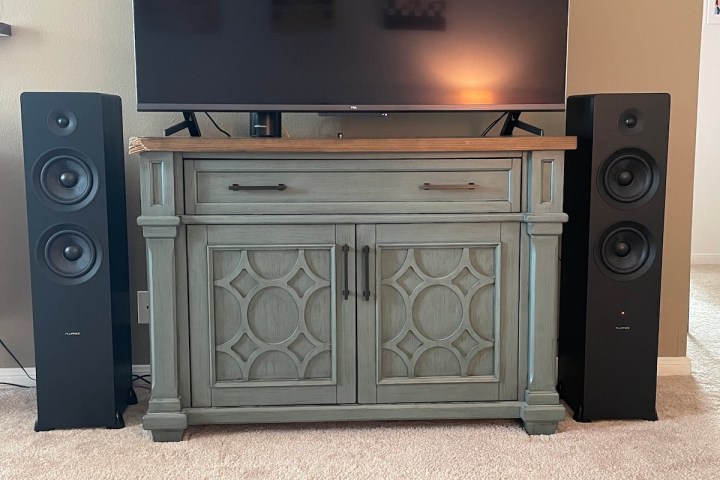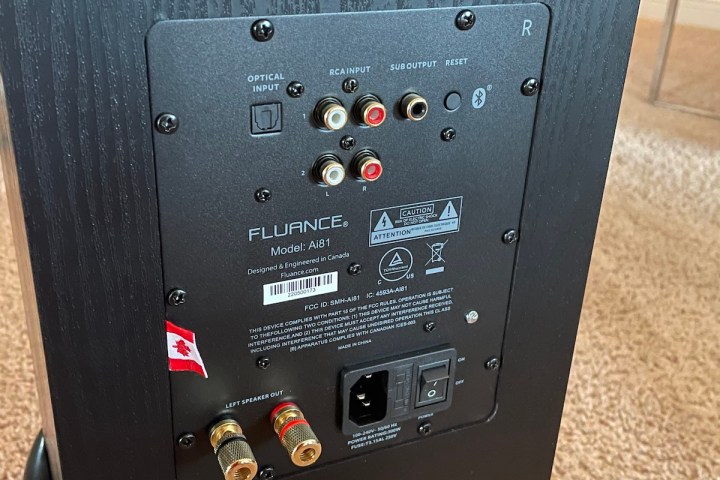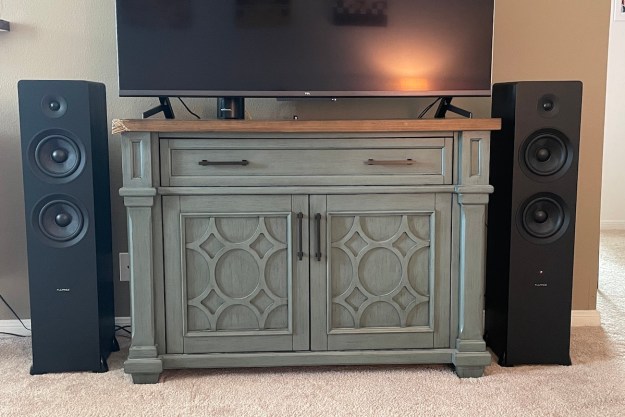
“The Fluance Ai81 may not fit in every listening space, but if you've got the real estate, you'll be beyond pleased with the results.”
- Incredible soundstaging
- Plenty of volume
- Sleek and modern design
- A range of connection options
- Reasonably priced
- No passive wiring option
- Tower design may be too big for some
When we think of powered speakers, our minds tend to lean toward more compact bookshelf speakers such as the superb KEF LX II or the renowned Klipsch The Fives. But as the complexity of our home theater setups increases, so has the demand for bigger, more powerful tower speakers with a wide range of connectivity options — from optical to line RCA to Bluetooth.
While we are seeing more of these powered tower speakers entering our living rooms, many of them are in a price range that’s unobtainable. This is why I was pleased to get the opportunity to review the Fluance Ai81 Elite Powered Floorstanding Tower Speakers, a reasonably priced ($500) beast of a pair of floorstanders with a multitude of connection options and serious sound driven by their own 150-watt amplifier that are suitable for everything from daily music listening to all your home theater viewing.
We’ve been reviewing Fluance speakers for years (their turntables are pretty great, too), but how do these powered towers stand up? Let’s find out.
Sleek design and aesthetics
The Fluance Ai81 Elites are available in four finishes — black ash, white walnut, lucky bamboo, and natural walnut –with no price variance between the them. In-box accessories include a power lead, an eight-foot run of speaker wire, a remote, and manuals.
The Ai81 deliver a robust, crystal-clear sonic profile that manages to pull out new details from albums we’ve heard a million times over.
My test speakers were black ash, which blands well with my general living room decor. But no matter which cabinet choice you opt for, the one-inch neodymium tweeter and 6.5-inch glass fiber drivers are always going to be black. These being floorstanding speakers, the ash shell combined with the black drivers may look a bit too sinister for some listening spaces, and there’s currently no magnetized grille option. I personally didn’t mind the aesthetic.
Dimensionally, the Fluance Ai81 are 37.8-inches tall, 8.50-inches wide, and 10.24-inches deep from front to back. The MDF cabinetry has a nice grainy finish, and the wood itself doesn’t feel cheap in any way.
Connectivity
All connections are located on the back of the right speaker. Here you’ll find two sets of RCA line inputs for connecting things like a turntable (a phono preamp is required, however), receiver, TV audio out, or even a smartphone with the right adapter cable. There’s also a digital optical input for running sound from TVs, receivers and more, as well as a subwoofer output, speaker wire terminals (the output set), and an AC power port. There’s also a master on/off switch for the system, as well as a volume adjustment dial located up top, which doubles as an input selector when you push the knob in.

Around front, a single LED indicator is your guide for determining if the speakers are on or off and what input you’re set to. Volume, treble, and bass adjustments will make the LED flash, with a red blink meaning you’ve hit the maximum level for each adjustment.
Over on the left speaker, the only connections to speak of are the speaker wire terminals (the input set).
Quick setup and simple controls
The Fluance Ai81 may appear like a normal pair of passive tower hi-fi speakers that you would connect with speaker wire to an amp or receiver. And that’s how I first attempted to wire them. Yes, the speaker terminals on both the left and right channels fooled me into thinking I could connect the Ai81 to my A/V receiver, but that’s not the case here. Similar to most powered speaker sets, like desktop computer speakers even, the terminals on the back of each speaker are to be connected by the included speaker wire. That’s it.
Miles Davis’ Blue In Green sounds simply breathtaking on the Ai81s, making me feel like I was enjoying a late-night martini on a quiet October night in the city.
But rest assured, the Fluance Ai81’s are far from passive. Powered by a 150-watt Class D amplifier, it was go time once we flipped the power switch. But why powered speakers, you might ask? The benefit of powered speakers over passive speakers is the amplifier is built in, meaning you can connect a wide range of home theater components directly into them, making them more or less an all-in-one home theater setup. Passive speakers require amplification from an external amplifier or AV receiver.
The easiest first test was to pair my smartphone to the speakers, a process which took no time at all. After connecting, you’ll hear a kind of thumping sound, letting you know the handshake is complete. And other than switching inputs (which you can do with the remote or right-channel volume knob), the only other adjustments you’ll need to worry about are adding or removing treble and bass to your liking.
On the remote, there are a few buttons for play/pause and track skipping if you don’t want to handle these duties with your Bluetooth-connected device, as well as an LED adjusterthat allows you to tone down the brightness of the right speaker’s front indicator.
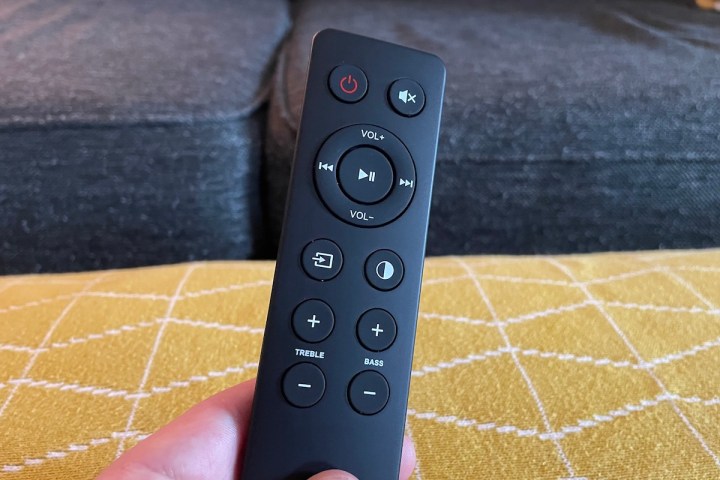
Admittedly, the remote feels a little cheap, and while it would have been nice to see some kind of on-screen readout for the input we had the speakers set to (a range of LED colors represent the different sources), the simplicity of the single light is hard to argue with.
How do they sound?
The Fluance Ai81 deliver a robust, crystal-clear sonic profile that manages to pull out new details from albums and tracks I’ve heard a million times over. And with Bluetooth 5 streaming (using the AAC codec) being the go-to source for most potential Ai81 listeners, I did all of my music demoing with an iPhone 12 wirelessly sending Apple Music content to the speakers.
Porcupine Tree’s latest release, CLOSURE/CONTINUATION, is a multilayered progressive rock opus that has never sounded so lush. Shimmering, melancholic guitar and vocals are front and center on tracks like Of The New Day and Chimera’s Wreck, with the speakers steeping us in a perfect mixture of clean treble and smooth midrange. When drums, bass, and Telecaster thrash kick in during the latter halves of both songs, the Ai81 embrace the instrumental punch.
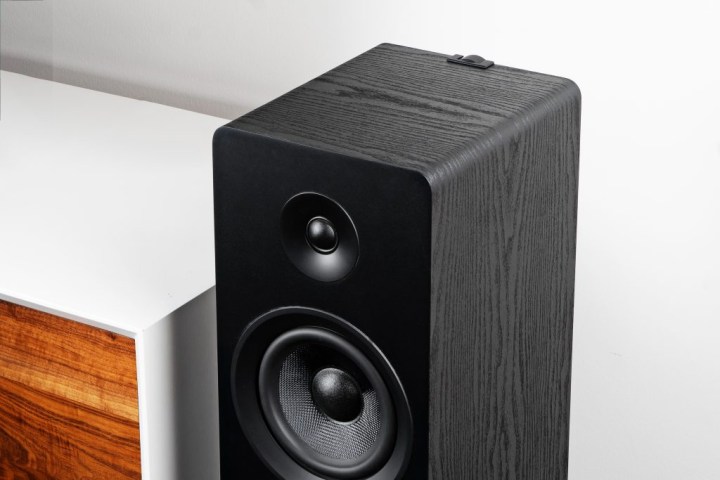
The album’s steady rocker, Herd Culling, opens with a mishmash of digital noise and panned synths, a quiet lead-in that the Fluance Ai81 are patient in articulating, slowly opening up the soundstage to gain way for the crunchy-clean, main guitar riff. When frontman Steven Wilson screams “liar,” the band dials up the adrenaline, breaking into a head-basher of a chorus that gains and soars across all frequencies.
For something completely different, Miles Davis’ Blue In Green sounds simply breathtaking on the Ai81s, making me feel like I was enjoying a late-night martini on a quiet October night in the city, watching the boys play their jazzy hearts out. Davis and John Coltrane are the real standouts here, with the trumpeter and bandleader receiving a proper center-stage accentuation. Sincerely, whenever Davis breaks into a melodic line or two, you can imagine seeing a spotlight shine down on him. And the same goes for Coltrane’s tenor sax, although the staging shifts a hair to the left, sharing a corner with pianist Bill Evans’ sparse, tinkling chords.
Simply put, the Ai81 brought an all-new life to this jazz standard, and frankly, the number sounded so sugary-sweet, I may have shed a tear or two (it’s the trumpet, it gets to me).
To combat our tears, and to further stretch the Ai81s to their limits, I took a dive into the world of unforgiving thrash-metal. Let’s just say that mid-’80s Metallica has never sounded this ruthless. Our album of reference: Master of Puppets. The Ai81s captured all of the Ennio Morricone-flavored goodness of Battery‘s opening acoustic guitars, before plunging headfirst into the track’s galloping guitars, bass, and drums, with a little extra high-end for Kirk Hammett’s ripper of a guitar solo.
Welcome Home (Sanitarium) is the softer track off this album, and the Ai81 do an excellent job of making these quieter passages extra-special. James Hetfield’s main, chorus-laden guitar sounds isolated, sorrowful, and a bit springy, too, a tone amicably juxtaposed against Hammett’s soaring pre-verse leads. It’s guitar double-duty done right, and the Ai81 defiantly balance both six-string styles.
Built for gamers and cinephiles, too
I also put the digital optical input to good use, connecting my TCL 6-Series TV to the Ai81 and putting a few different A/V sources to the test. First up was a little PS4 action with Crash Bandicoot 4 at the helm. I know, it’s a kid’s game, but have you tried getting 100% completion on this? It’s impossible! But the more important reason I chose this title was because of its dynamic sound mix, an audio paradise that the Ai81 drove home.
Colorful, cartoonish sound effects received little to no compromise, with every crate-break and head-stomped enemy getting equal attention. And let’s not forget the game’s propulsive and zany background music — each track received the kind of love delivered in our above musical samplings.
We also channeled our inner cinephile, with There Will Be Blood as our Blu-ray of choice. Quiet, dialogue-driven moments were on-point, with Daniel Day Lewis’ infamous “milkshake” speech sounding all the more guttural, focused, and haunting — especially when you factor in the Ai81’s acoustic focus on the booming, basement bowling alley.
And the oil derrick explosion scene! The Ai81 rumbled from start to finish, capturing all of the environmental chaos. It’s a heart-thumping sequence rendered all the more intense by composer Jonny Greenwood’s kinetic Bodysong played against the worksite devastation.
Price and warranty
Right now, you can purchase the Fluance Ai81 Powered Floorstanding Tower Speakers for $500. You’ll get lifetime customer support for the speakers, along with a two-year manufacturer’s warranty.
The bottom line
As far as Bluetooth-friendly powered floorstanders go, you’ll be hard-pressed to find a rival to the Ai81 for the price. They may be on the big side, but if you’ve got the room to spare and are looking for a set of versatile powered speakers that can take just about any input (save for HDMI) and give it some impressive power and clear, defined sound, then stop shopping now. And if size is the limiting factor, Fluance also makes two bookshelf versions of the Ai design.
Are there alternatives? There always are. In terms of powered bookshelf systems that we’ve actually tested, the SVS Prime Wireless are an awesome pair of speakers with just as many connectivity options, along with a comparable price. Of course, there are more expensive brands that go way above and beyond, such as KEF’s incredible lineup of powered stereo speakers. But if you can’t spare thousands of dollars, the Ai81s are near as good as it gets and you’re sure to get many years of use out of them.

